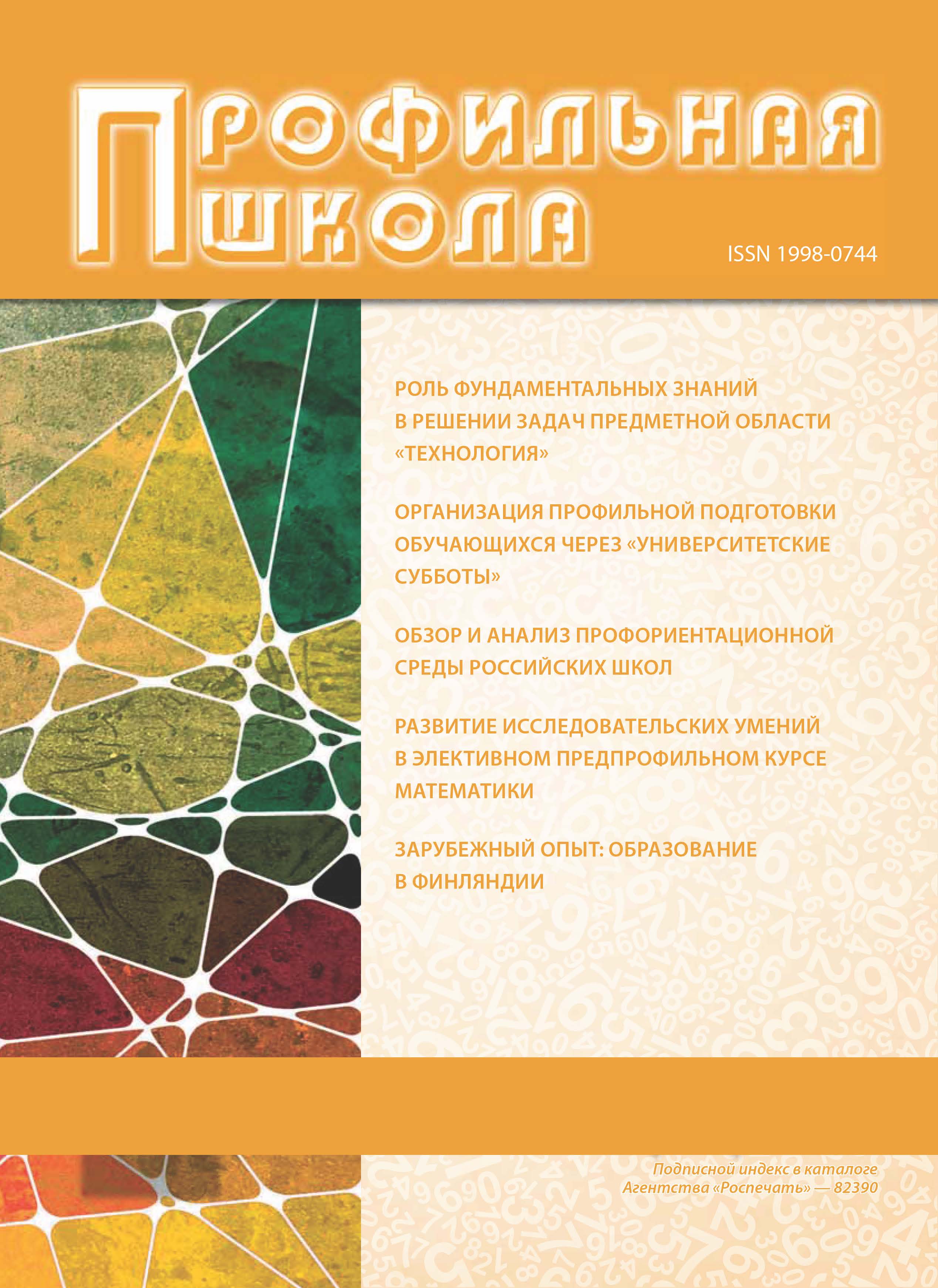The paper considers issues related to classifying techniques of educational activities. The lack of logically consistent overall classification of educational activities is emphasized. To develop such classification it is proposed to identify explicit and implicit attributes of the «technique» notion. One of the explicit attributes is a set of conditions necessary for the technique to be designed and implemented. Implicit attributes depend on psychological and pedagogical theories applied for technique designing in the course of pedagogical phenomena modeling. The author identifies three groups of explicit attributes, namely, educational goals; educational contents; contingent of learners. Possible variations of the said attributes are described. Also described are various taxonomies of goals, kinds of educational contents and types of learners by stage of education and intellectual development of learners. To facilitate classification of educational activities techniques the orthogonal three-dimensional model is constructed to serve as a morphological matrix, describing a set of technologies, necessary to implementing the State educational standards.
educational activities techniques, classification of techniques, educational goals, educational content, contingent of learners, morphological matrix of techniques.
В настоящее время существуют различные подходы к построению классификаций технологий учебного процесса, основанные на выделении разных комплексов их характеристических признаков. Для В.В. Гузеева системообразующим признаком являются цели образования, которые он делит на три группы: информационно-перцептивные; деятельностные; ценностные. Выделяя два уровня интериоризации содержания образования — усвоение и присвоение, — В.В. Гузеев [3] получает девять типов образовательных технологий:
- информационно-перцептивные;
- информационно-деятельностные;
- информационно-ценностные;
- деятельностные;
- деятельностно-информационные;
- деятельностно-ценностные;
- ценностные;
- ценностно-информационные;
- ценностно-деятельностные.
В.В. Юдин предлагает трехмерную классификационную схему. В ней основными факторами являются: элементы содержания обучения (знания о мире и о способах деятельности; опыт деятельности; опыт эмоционально-ценностного отношения к действительности); этапы познавательной деятельности ученика (мотивация, целеполагание, понимание информации, оперирование информацией, моделирование, формирование теоретических абстракций, конкретизация, планирование, контроль деятельности, контроль результата, оценивание); элементы, характеризующие действия учителя (метод, форма, «клеточка» образовательного процесса) [12, с. 97].
Г.Ю. Ксензова выделила три группы технологий:
- технологии объяснительно-иллюстративного обучения, в основе которых информирование, просвещение учащихся и организация их репродуктивных действий с целью выработки у них общеучебных умений и навыков;
- личностно-ориентированные технологии обучения, создающие условия для обеспечения собственной учебной деятельности обучающихся, учета и развития индивидуальных особенностей школьников;
- технологии развивающего обучения, в центре внимания которых — способ обучения, с необходимостью вызывающий, способствующий включению внутренних механизмов личностного развития обучающихся, их интеллектуальных способностей» [4, с. 8]. Нетрудно видеть, что классификация Г.Ю. Ксензовой построена на таксономии целей образования.
1. Bespal´ko V.P. Slagaemye pedagogicheskoy tekhnologii [Components of educational technology]. Moscow, Pedagogika Publ., 1989. 192 p. EDN: https://elibrary.ru/ZHSOSH
2. Guzeev V.V. Planirovanie rezul´tatov obrazovaniya i obrazovatel´naya tekhnologiya [Planning of educational outcomes and educational technology]. Moscow, Narodnoe obrazovanie Publ., 2000. 240 p.).
3. Guzeev V.V. K postroeniyu formalizovannoy teorii obrazovatel´noy tekhnologii: tselevye gruppy i tselevye ustanovki [On the construction of a formalized theory of educational technology: focus groups and target setting]. Shkol´nye tekhnologii [School Technology]. 2002, no. 2, pp. 3-10.
4. Ksenzova G.Yu. Perspektivnye shkol´nye tekhnologii [Prospective school technology]. Moscow, Pedagogicheskoe obshchestvo Rossii Publ., 2000. 224 p.
5. Smirnov S.A. Pedagogika: pedagogicheskie teorii, sistemy, tekhnologii [Pedagogy: pedagogical theories, systems , technology]. Moscow, Publishing House «Academia», 2001. 512 p.
6. Raven J. Competence in Modern Society: Its Identification, Development and Release. Oxford, England: Oxford Psychologists Press. 1984. (Russ. ed.: Raven Dzh. Kompetentnost´ v sovremennom obshchestve: vyyavlenie, razvitie i realizatsiya. Moscow, Kogito-Tsentr Publ., 2002. 396 p.). EDN: https://elibrary.ru/RAXVCB
7. Selevko G.K. Sovremennye obrazovatel´nye tekhnologii [Modern educational technology]. Moscow, Narodnoe obrazovanie Publ., 1998, pp. 25-31.
8. Kozlova V.V., Kondakova A.M. Fundamental´noe yadro soderzhaniya obshchego obrazovaniya [Fundamental core content of general education]. Moscow, Prosveshchenie Publ., 2011. 79 p.
9. Khutorskoy A.V. Klyuchevye kompetentsii i obrazovatel´nye standarty [Key competencies and educational standards]. Internet-Journal «Eydos». 2002. 23 April. Available at: http://eidos.ru/journal/2002/0423.htm (Accessed 28 December 2013).
10. Choshanov M.A. Obzor taksonomiy uchebnykh tseley v pedagogike SShA [Overview taxonomy of educational objectives in pedagogy USA]. Pedagogika [Pedagogy]. 2000, no. 4, p. 87.
11. Shamova T.I., Davydenko T.M. Upravlenie obrazovatel´nym protsessom v adaptivnoy shkole [Management of the educational process in the adaptive school]. Moscow, Center «Pedagogicheskiy poisk» Publ., 2001, p. 247
12. Yudin V.V. Obshchepedagogicheskie tekhnologii [General education technology]. Mezhdunarodnyy universitet biznesa i novykh tekhnologiy [International University of Business and New Technologies]. Yaroslavl’, RITs MUBiNT Publ., 2007, p. 97.
13. Anderson, L.W. (Ed.), Krathwohl, D.R. (Ed.), Airasian, P.W., Cruikshank, K.A., Mayer, R.E., Pintrich, P.R., Raths, J., & Wittrock, M.C. (2001). A taxonomy for learning, teaching, and assessing: A revision of Bloom´s Taxonomy of Educational Objectives (Complete edition). New York: Longman.
14. Biggs, J.B. and Collis, K. (1982). Evaluating the Quality of Learning: the SOLO taxonomy. New York, Academic Press
15. Biggs, J.B. (2003). Teaching for quality learning at university (2nd ed.). Buckingham: Society for Research into Higher Education & Open University Press.
16. Bloom, B.S. (1956). Taxonomy of Educational Objectives, Handbook I: The Cognitive Domain. New York: David McKay Co Inc., pp. 62-200.
17. Dave, R.H. (1975). Developing and Writing Behavioral Objectives. (R.J. Armstrong, ed.). Tucson, Arizona: Educational Innovators Press.
18. Harrow, A. (1972). A Taxonomy of Psychomotor Domain: A Guide for Developing Behavioral Objectives. New York: David McKay.
19. Key competences for lifelong learning. European Reference Framework. Luxembourg: Office for Official Publications of the European Communities, 2007. 12 p.
20. Krathwohl, D.R., Bloom, B.S., & Masia, B.B. (1964). Taxonomy of Educational Objectives, the Classification of Educational Goals. Handbook II: Affective Domain. New York: David McKay Co., Inc.
21. Simpson, E.J. (1972). The classification of educational objectives in the psychomotor domain. Vol. 3. Washington, DC: Gryphon House.






